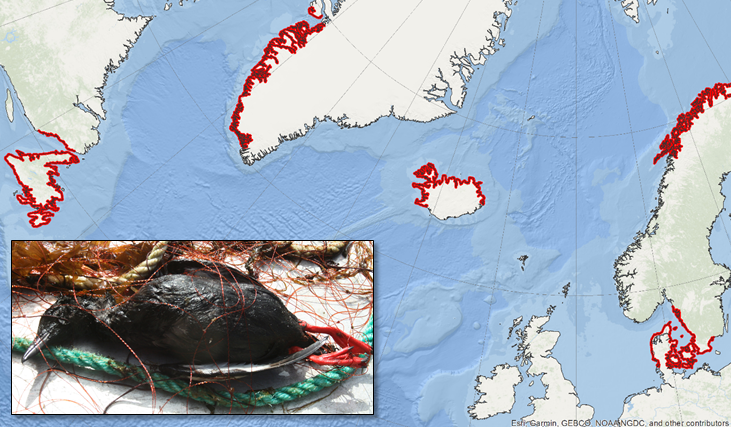Seabird bycatch in lumpsucker fisheries can pose a threat to vulnerable populations
Researchers from several countries around the North Atlantic have cooperated in a study of the impacts of lumpsucker Cyclopterus lumpus fisheries on seabirds through bycatch in gillnets. They used a dataset containing registered bycatch in lumpsucker gillnets across the entire geographical range of this fishery, allowing them to compare systematically sampled data on bycatch in gillnets from three Nordic countries. The results showed a high rate of seabird bycatch, but with large variations between the countries involved in the fishery.tives are identified, and specific actions to obtain these objectives have been defined.
Human-induced threat
Seabirds are threatened by a variety of human activities. For instance, seabirds are caught and drown in fishing gear – so-called incidental bycatch – in several commercial fisheries in the North Atlantic. A group of researchers has collected all available information on seabird bycatch in lumpsucker gillnets to assess the impact of this fishery on seabirds. Systematic sampling of bycatch rate in lumpsucker fisheries was, however, only available from Denmark, Iceland and Norway.
Differences between countries
The results showed that most birds killed as bycatch in the lumpsucker fisheries were diving ducks, cormorants and auks, and each year locally high numbers of seabirds (up to 2.4 birds per trip) were taken as bycatch. There were, however, large differences in bycatch rates between countries. The bycatch rate in the Icelandic fishery was, for example, much higher than that in Norway and Denmark. While the disparities were believed to result from a real spatial variation in bycatch, the researchers could not discount the possibility that some of the variation was a result of differences in methods by which bycatch data were collected in each country.
Even if the extent and consequences of bycatch on a population level could not be fully assessed due to limitations in the data material, the study leaves no doubt that gillnet fisheries for lumpsuckers may pose a considerable risk to certain populations of diving seabirds.
Read the article:
Contact person: Signe Christensen-Dalsgaard, NINA

